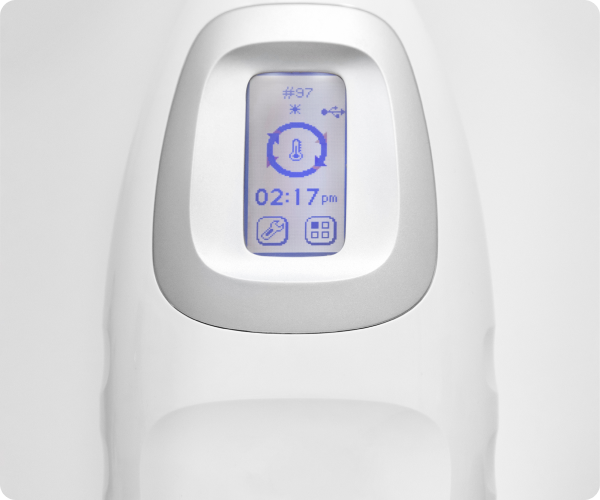Your step-by-step guide to getting answers – and why the right diagnosis matters
If you’ve had a lingering cough, wheezing, breathlessness, or chest tightness, you might be wondering: Is this asthma? COPD? Or something else entirely? Perhaps you have been given a diagnosis but you are not sure why or what tests contributed to that decision? Getting a clear diagnosis is the first step toward feeling better – and taking back control.
Asthma and COPD are both long-term conditions that affect your airways, but they’re managed differently. A proper diagnosis helps you get the right treatment from the start, avoid unnecessary medication, and feel more confident managing your condition day to day.
This guide will walk you through how asthma and COPD are diagnosed, what tests you may be offered, and how you can prepare for appointments.
Step 1: Spotting the signs
It all starts with your symptoms and story. Your GP or respiratory nurse will want to know:
- What symptoms do you have? (Cough, breathlessness, wheeze, tight chest, sputum?)
- When did they start – and what triggers them?
- Do they come and go, or are they always there?
- Do they wake you at night?
- Do they get worse with exercise, weather changes, or infections?
- Do you smoke or have you ever smoked?
- Do you have a family history of asthma, allergies, or lung conditions?
- Have you worked in a job with dust, fumes, or chemicals?
This conversation helps guide what tests are needed – and whether you might have asthma, COPD, or a bit of both (overlap).
Step 2: Lung function testing (Yes, you’ll blow into a tube)

You’ll usually be offered spirometry – a simple test that measures how much air you can blow out and how fast.
What to expect:
- You take a deep breath in and blow out hard and fast into a tube
- A trained healthcare worker will coach you through it
- You may repeat the test after using a reliever inhaler to see if your airways improve (this is called reversibility testing)
What it shows:
- Whether your airways are narrowed
- Whether the narrowing improves with medication (more likely in asthma)
- How severe your airflow limitation is
🔹 Asthma tends to show reversible narrowing of the airways
🔹 COPD usually shows fixed, persistent narrowing that doesn’t change much after inhalers
Step 3: Peak flow diary (Asthma only)

For asthma, your GP may ask you to use a peak flow meter at home – a small handheld tube that measures how fast you can blow out.
You’ll usually:
- Take readings morning and evening for 2-4 weeks
- Record them in a paper or app diary
- Note down any symptoms or triggers
Large swings in peak flow readings across the day or week suggest variable airway narrowing, which is typical of asthma.
Step 4: FeNO Test (if available)

Some clinics offer a FeNO test (fractional exhaled nitric oxide). It’s a non-invasive test that measures inflammation in your airways – particularly useful for asthma.
You just:
- Breathe into a special mouthpiece
- The machine measures nitric oxide (a marker of eosinophilic inflammation)
High levels of FeNO suggest your lungs are inflamed and may respond well to steroid inhalers.
📌 Not all GP practices offer this test yet – it’s more common in specialist clinics.
Step 5: Other helpful Tests
Depending on your history, your clinician may also request:
- Chest X-ray: To rule out other lung problems (e.g. infections, fluid, scarring)
- Blood tests: To check for anaemia, infection, or signs of inflammation
- Allergy testing: If allergic asthma is suspected
- Alpha-1 antitrypsin blood test: For very early or non-smoking-related COPD
- Oxygen saturation checks: Especially if you have COPD symptoms
Asthma–COPD overlap: A bit of both?
Some people – especially older adults who smoked but also have a history of asthma or allergies – don’t fit neatly into one box. You might be told you have asthma–COPD overlap.
If this happens, your healthcare team will likely tailor your treatment to manage both inflammation (asthma) and airway narrowing (COPD) – often with a combination of inhalers.
What happens at your appointment?
You’ll often need:
- A symptom diary or record of when and how you feel unwell
- A list of your current medications
- A note of any triggers you’ve noticed
- Your smoking history, including number of years and how many cigarettes per day
- A list of questions you want to ask – don’t be shy!
Bring someone with you if you feel anxious or forgetful during appointments.
What to ask
Here are some good questions to bring up:
- What condition do you think I might have – and why?
- What tests will help confirm or rule that out?
- What treatments would I need to start, and when?
- Is there anything I should change now while waiting for test results?
- Can I have a written action plan?
Final thought: Knowledge = Power
The sooner you get an accurate diagnosis, the sooner you can start breathing better, living more fully, and taking control of your condition. Lung conditions can feel scary at first – but with the right information, treatment, and support, there’s a lot you can do to feel stronger and more in control.
If you haven’t already, download the free Evergreen Life app to track your health, including managing your asthma and/or COPD, and get practical tips that help you take control of your overall health.
This article is for information and support only. It is designed to help adults understand the how asthma and COPD are diagnosed. It does not replace medical advice, diagnosis, or treatment from a qualified healthcare professional.
– Everyone is different: The tests and steps described here may not apply to every individual. Your healthcare team will tailor investigations based on your symptoms, age, medical history, and other conditions.
– Do not self-diagnose: Wheeze, cough, breathlessness, and chest tightness can have many causes. Only a trained clinician can confirm whether you have asthma, COPD, or another condition.
– Keep using prescribed medicines: If you already have an inhaler or other treatment, continue using it as directed until advised otherwise by your doctor or asthma/COPD nurse.
When to seek help urgently:- Call 999 if you have sudden severe breathlessness, difficulty speaking, blue lips/fingers, chest pain, or if your usual reliever inhaler is not helping.
– Call 111 (UK) or your out-of-hours service if you are worried about your breathing and need urgent but non-emergency advice.
– Arrange follow-up: If you are waiting for tests or results but your symptoms worsen, contact your GP or specialist team sooner.
- NICE Asthma: Diagnosis and Monitoring.
- NICE COPD in Over 16s.
- NICE N6245. https://www.nice.org.uk/guidance/NG245.
- GOLD Global Strategy for the Diagnosis, Management, and Prevention of COPD 2024.
- Asthma + Lung UK: Getting Diagnosed.





